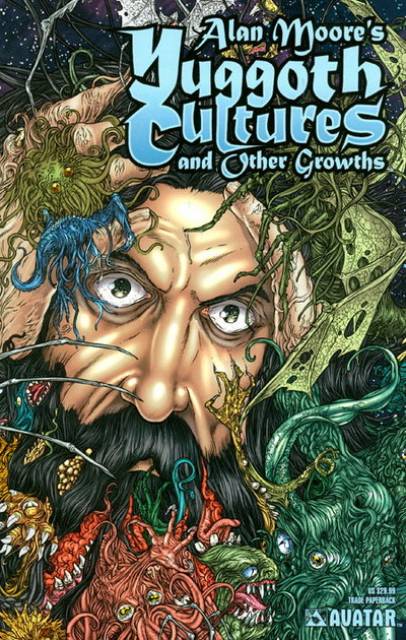Over the course of a single decade, Moore not only established himself as one of the most brilliant storytellers of the last hundred years, but he also helped reinvent an entire medium, turning the humble comic book into a profoundly respected art-form capable of marrying story, character, and illustrated visuals in radically new ways. "I was always trying to find what the medium was capable of and to push it as far as possible," Moore told The Guardian in 2011.
Thankfully, he did not retire and continued to gift the world with the succulent fruits plucked straight off the vine of his fertile mind. While fans differ on the matter of favorite books, we'd like to argue that Moore's magnum opus — a veritable playground of the imagination, if you will — is The League of Extraordinary Gentlemen, particularly its first two volumes, which served as the basis for the loose film adaptation of the same name released in 2003 (stream it on Peacock right here).
Created in tandem with the late illustrator Kevin O'Neill, the DC-published graphic novel exemplifies the famous quote oft-attributed to the great Pablo Picasso: "Learn the rules like a pro, so you can break them like an artist."
The League of Extraordinary Gentlemen sees Moore simultaneously paying homage to the established power of the written word and the perennial literary touchstones that shaped humanity's modern creativity before ingeniously twisting it all out of shape by uniting a band of beloved fictional characters like Allan Quatermain (King Solomon's Mines), Mina Parker (Dracula), and Captain Nemo (20,000 Leagues Under the Sea) into a ragtag team of Victorian-era superheroes tasked with protecting the interests of Great Britain.
"I thought about the actual point of generation of the superhero genre and most of it seemed to be nineteenth century fiction," he explained to Tripwire Magazine in 1998. "If you look at the first generation of superheroes right up until Stan Lee created the Marvel titles in the sixties, this is evident. The Hulk is obviously Jekyll and Hyde, you’ve got a nod to Wells’ The Invisible Man in Fantastic Four’s Invisible Woman. I decided to go back to the source and once I’d done that, I put my mind to assembling a cast, thinking about what kind of world they might inhabit.”
Alan Moore
61 readers
28 users here now
For all things Alan Moore.
founded 3 months ago
MODERATORS
1
2
3
4
5
23
‘Fandom has toxified the world’: Watchmen author Alan Moore on superheroes, Comicsgate and Trump
(www.theguardian.com)
6
7
8
9
16
Alan Moore on magic, storytelling, fascism, and his new not-quite-a-comic
(www.publishersweekly.com)
10
11
12
13
14



